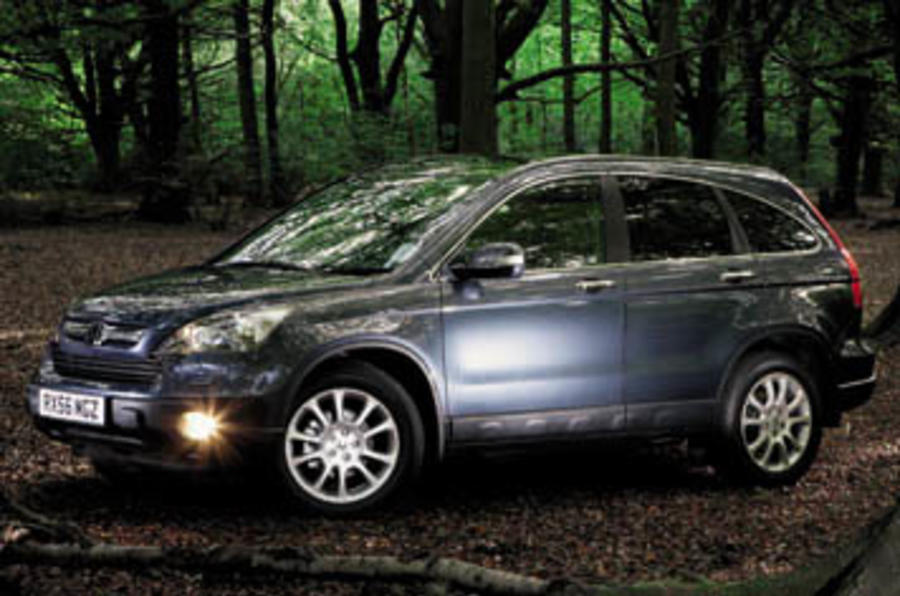What is it?
It’s the new Honda CR-V, the third-generation of Honda’s softish, road-biased 4x4. And this time it’s more road-biased than ever.
It doesn’t even look much like a 4x4 – the spare wheel has been relocated to beneath the boot floor and the tailgate is now top, rather than side hinged. In fact, aside from some curved plastic mouldings around the bottom of the body, there are no indications that this is anything other than a tall estate car. And that’s no coincidence. Because although Honda names the Land Rover Freelander 2, Toyota Rav4 and Nissan X-Trail among the CR-V’s rivals, Honda has benchmarked this car more against estates like the VW Passat and its own Accord Tourer.
What’s it like?
It’s a very good car. Unusually these days, it’s slightly smaller than its predecessor – 10mm shorter (because the spare wheel’s moved to the boot), 30mm lower and has a 10mm shorter wheelbase. But it’s still spacious inside.
There’s ample room front and rear and the CR-V has a fine boot with a (surprisingly handy) removable floor about halfway up. Better still, the rear seats can be slid (separately at the 60/40 split) back and forth to play boot space off against rear legroom. They also fold and tumble easily into three sections, which are split 40/20/40. The CR-V’s seats are just at the ‘right’ height to slide in and out of, while the boot sill is usefully lower than in most of its SUV rivals.
More soft-touch plastics would be welcome in a £20k car, but they’re certainly very well fitted (in Honda’s Swindon plant) and everything is well ordered. The driving position adjusts adequately, visibility is fine, the high-set gearlever is a doddle to flick around its gate and the driving controls all operate with nice weight and progression.
But despite its looks, it’s actually in the driving that the CR-V feels most like an estate car. Its bodyshell is 32kg lighter than before, yet bending stiffness is up by 85 per cent because of an increased use of high-tensile steel.
And that pays dividends on the road, because no other SUV handles as well as this. (Neither do quite a few conventional estate cars, come to think of it.) It’s poised, agile with limited roll and plenty of grip.
The 2.0-litre i-VTEC petrol has electrically assisted power steering, whereas the (mildly noisy) 2.2-litre diesel has a hydraulic system. The diesel’s is the only one with any steering feel.
Ride quality could be better, but as an all-round driving tool the CR-V’s excellent for a big family car. Off-road credentials? Honda talks about approach, breakover and departure angles, but they’re only 28, 18 and 23 degrees respectively. And while there’s electronically controlled four-wheel-drive, you’d want some more serious rubber to properly exploit it off-road.
But this is primarily a road car, after all. At 34.9mpg on the combined cycle and with 192g/km, it’s a comparatively economical one and, if Honda can get bums on seats, customers will find it’s an extremely good one.
Should I buy one?
If you’re at all serious about off-roading, no you shouldn’t. But if, like most buyers of soft-roaders, you’ll never do anything more hardcore than ford a small stream, then certainly. The CR-V is far from the most dynamic or aggressive-looking SUV on the market, but it’s quite possibly the best.















Add your comment